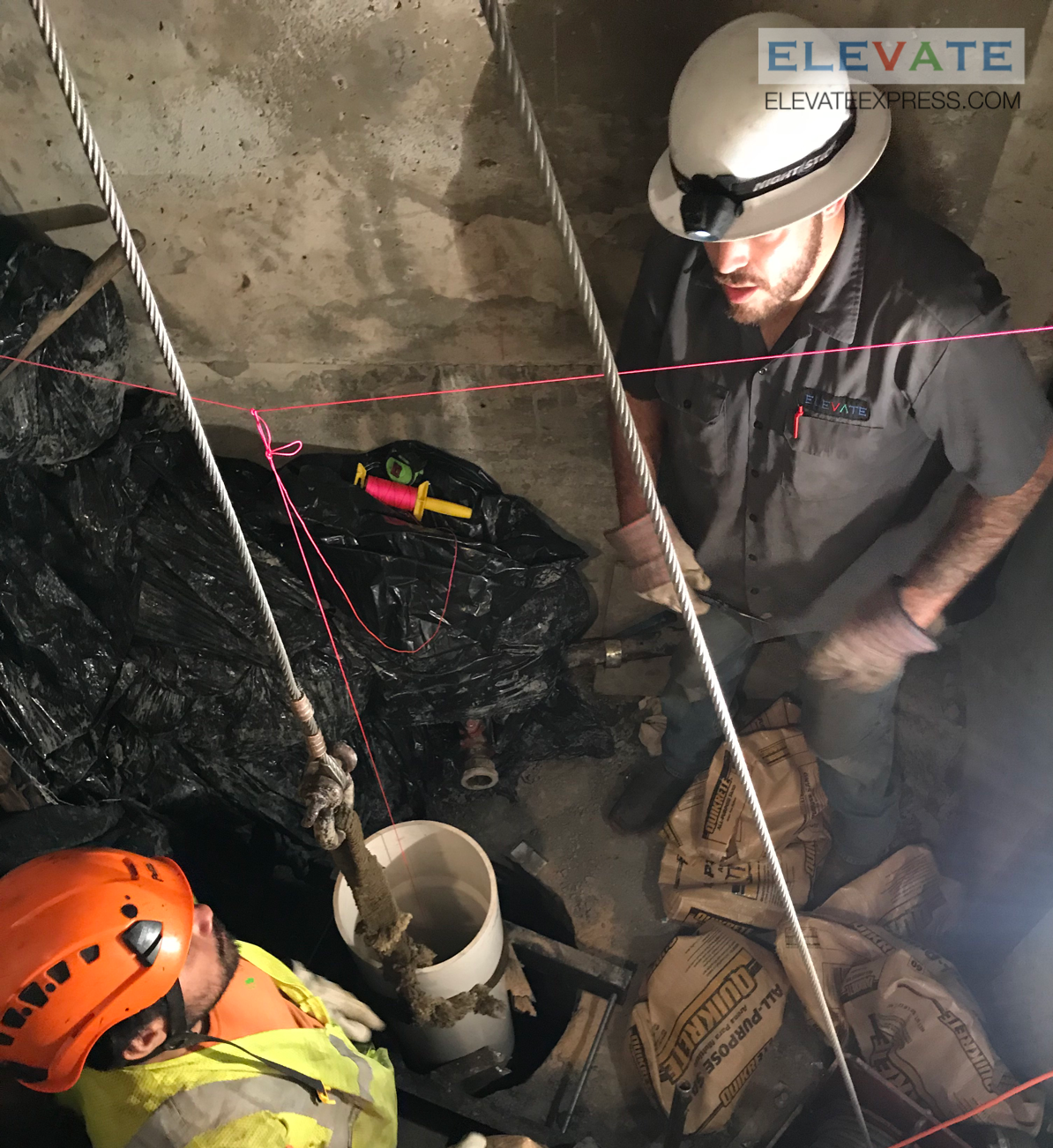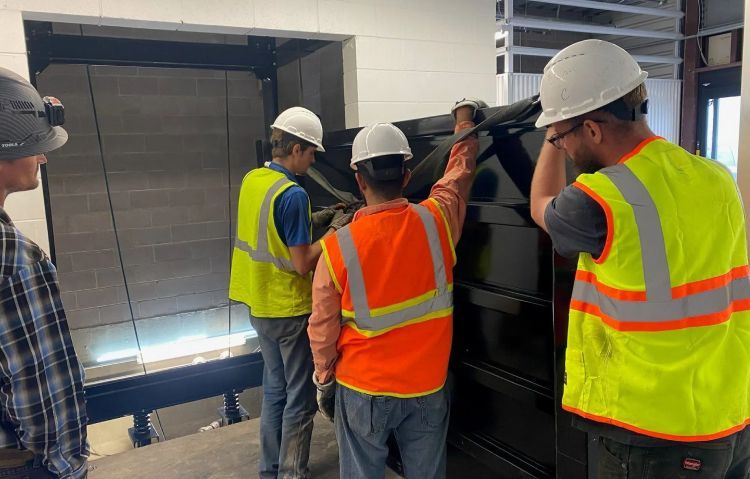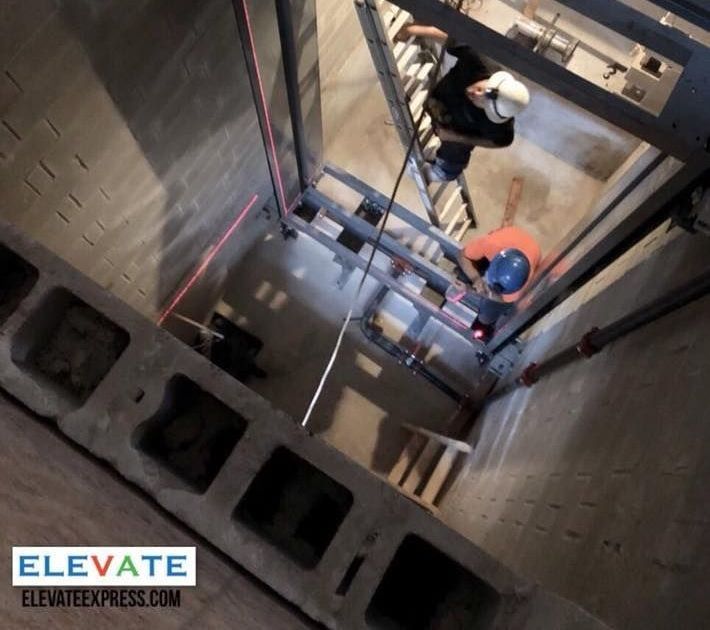Elevator ADA Upgrades in San Antonio, TX: Essential Guide to Building Accessibility Compliance
Elevators play a vital role in making buildings accessible to everyone and in San Antonio, property owners are increasingly focused on ADA compliance upgrades. Our team at Elevate Enterprises specializes in transforming outdated elevator systems into modern, fully accessible solutions through elevator modernization services hat meet all current ADA requirements while enhancing safety and usability for all passengers.
San Antonio businesses and property managers trust us to deliver comprehensive elevator modifications that go beyond basic compliance. Whether installing tactile buttons with Braille markings, upgrading door sensor technology or ensuring precise floor leveling, we design each improvement to align with accessibility standards and create safer, more inclusive spaces.
We understand that elevator accessibility impacts daily operations and user experience in Texas properties. Our expertise in ADA-compliant upgrades includes lowered control panels, audible signals, emergency communication systems and proper handrail configurations - all essential elements that make elevators safer and more accessible for everyone who relies on them.

The Importance of Elevator ADA Upgrades in San Antonio
San Antonio property owners must prioritize elevator accessibility to serve all building occupants while protecting themselves from legal issues. Modern ADA-compliant elevators create safer, more welcoming spaces that benefit the entire community.

Ensuring Accessibility for All Users
San Antonio's growing population includes over 200,000 residents with mobility challenges who rely on accessible elevators daily. Modern ADA upgrades make navigating buildings easier for wheelchair users, elderly individuals and people with visual or hearing impairments when paired with ongoing elevator maintenance in San Antonio.
Properly configured elevator controls, positioned at accessible heights with tactile elements, enable independent use by people with different abilities.
Voice announcements and audible signals help visually impaired passengers navigate confidently between floors. Wider doorways and precise floor leveling allow smooth wheelchair access.
Legal Compliance with ADA and Texas Accessibility Standards
In Texas, elevators must meet both federal ADA requirements and state TAS guidelines. Non-compliance can result in penalties of up to $75,000 for a first offense—making proactive compliance essential for property owners.
Regular inspections verify essential elements like
- Emergency communication systems
- Door timing and reopening devices
- Properly placed handrails
- Tactile/Braille signage
- Minimum cab dimensions
We help building owners maintain detailed compliance documentation to demonstrate good faith efforts during audits.
Reducing Risk and Liability for Property Owners
ADA-compliant elevators significantly reduce accident risks and liability exposure. Updated safety features prevent common incidents involving doors, uneven flooring or emergency situations.
Professional upgrades protect property owners from
- Personal injury lawsuits
- Federal accessibility complaints
- Insurance claim denials
- Failed safety inspections
Regular ADA maintenance keeps systems reliable, proves compliance, and helps protect against legal challenges.
Core ADA Requirements for Elevator Upgrades
The Americans with Disabilities Act establishes specific requirements for elevator accessibility in commercial and public buildings. These standards ensure safe, independent use for people with diverse mobility needs.
Cab Size and Interior Space Specifications
ADA standards require elevator cabs to be at least 51 inches deep, 68 inches wide and provide 16 square feet of clear floor space.
The elevator must maintain a minimum door width of 36 inches to allow easy entry and exit for wheelchair users.
Handrails must be 31–33 inches high with a 1.5-inch wall clearance to meet ADA standards.
Accessible Hall and Car Controls
Call buttons must be centered at 42 inches above the floor, with a minimum size of 3/4 inch in the smallest dimension.
ADA-compliant panels use raised characters and braille placed to the left of each button.
For safety and accessibility, all emergency controls are grouped at the bottom of the panel and set at a minimum height of 35 inches from the floor for easy reach.
ADA-compliant elevator buttons are at least ¾ inch wide and illuminate when activated.
Door Operation, Timing, and Sensors
Elevator doors must remain fully open for a minimum of 3 seconds before beginning to close.
Door reopening devices must detect obstacles at heights between 5 and 29 inches above the floor.
The maximum closing speed cannot exceed 1 foot per second.
Door sensors must automatically reopen doors without physical contact when obstructions are detected.
Audible and Visual Communication Features
ADA regulations require visible and audible signals at every hoistway entrance to indicate car arrival and direction of travel. Audible tones must sound once for upward movement and twice for downward, not exceeding 1500 Hz.
Visual indicators must be clearly visible from the hall floor area and installed at a minimum height of 72 inches. In addition, emergency two-way communication systems must provide both audio and visual confirmation of operation.
Key Elevator ADA Upgrade Solutions by Elevate Enterprises
Elevator modernization in San Antonio enhances safety, accessibility, and passenger comfort—exceeding ADA standards every step of the way.
Handrails and Cab Configuration Enhancements
We install continuous handrails on all non-door walls at the ADA-specified height of 31–33 inches above the cab floor. Each handrail features rounded edges and reinforced mounting capable of withstanding up to 250 pounds of force.
The cab interior dimensions we implement measure a minimum of 51 inches deep and 68 inches wide to accommodate wheelchairs and mobility devices comfortably.
We reconfigure elevator interiors to create more open, accessible floor space. With slip-resistant, long-lasting flooring, we enhance passenger safety while meeting all ADA clearance requirements.
Emergency Communication Systems
For passenger safety and accessibility, our elevators feature two-way communication devices with audio and text functions. Positioned at 35–48 inches from the floor, they’re easy to reach and fully ADA-compliant.
Our emergency phones include visual indicators, tactile symbols and hands-free operation. The systems automatically connect to our 24/7 monitoring center.
We integrate backup power supplies that keep communication systems operational during outages. Clear instructions in both visual and braille formats are prominently displayed.

Floor Leveling and Safety Improvements
Safety starts with precision. Our leveling system keeps elevators within ½ inch of the floor, removing dangerous gaps that cause trips and falls. Smart sensors actively adjust for a smooth, accurate stop every time.
We install enhanced door protection features, including
- Multi-beam light curtains
- Adjustable door timing controls
- Advanced reopening devices
- Improved door alignment mechanisms
The modernized control systems we implement provide smoother acceleration and deceleration, reducing sudden movements that could affect passenger stability.
Benefits of ADA-Compliant Elevator Upgrades for Properties
ADA-compliant elevator upgrades deliver measurable value to property owners through increased tenant satisfaction, enhanced property marketability and long-term operational improvements. These strategic investments create more inclusive spaces while generating tangible returns.
Enhancing Tenant and Customer Satisfaction
ADA-compliant elevators make buildings more welcoming and accessible to all visitors. We've seen that improved accessibility features like wider doors and precise floor leveling lead to higher tenant retention rates.
ADA upgrades provide smoother, quieter operation with safety features like extended door timing and advanced sensors.
Audio announcements and tactile controls ensure accessibility, boosting tenant satisfaction and drawing new occupants.
Boosting Property Value and Market Appeal
Buildings with ADA-compliant elevators don’t just meet regulations—they earn more, especially when paired with our commercial elevator services that attract long-term tenants.
Modern accessibility features serve as strong selling points when marketing commercial space. Potential tenants actively seek buildings that demonstrate commitment to universal access.
ADA compliance cuts liability risks and legal costs while often qualifying buildings for lower insurance rates.
Future-Proofing Through Modernization
Installing ADA upgrades now prevents costly emergency updates later. We recommend comprehensive modernization that exceeds current standards to accommodate future regulation changes.
ADA upgrades with smart technology boost efficiency, reduce costs, and deliver long-term savings.
Regular maintenance becomes simpler and more cost-effective with modern ADA-compliant equipment. These systems include diagnostic capabilities that help prevent unexpected downtime.
Frequently Asked Questions
Elevator ADA compliance requirements involve specific technical standards, implementation timelines and property-specific considerations. Our team regularly addresses key concerns about bringing elevator systems up to current accessibility standards.
How can I determine if my elevator system is compliant with current ADA regulations?
Professional inspectors evaluate elevator cab dimensions, control panel heights, button specifications and safety features against current ADA standards.
We conduct thorough assessments measuring door timing, emergency communication systems and floor leveling accuracy to identify non-compliant elements.
What types of properties are mandated to adhere to ADA accessibility standards for elevators?
Commercial buildings, medical facilities, educational institutions, and multi-family residential properties with more than three stories must meet ADA elevator requirements.
Public spaces, government buildings, and places of public accommodation fall under mandatory ADA compliance regulations.
What is the expected duration for implementing ADA-related elevator upgrades?
Basic upgrades like control panel adjustments and signage installations typically take 2-3 days.
More extensive modifications involving cab reconfiguration or mechanical system updates may require 1-2 weeks.
During the ADA upgrade process, will elevator service be unavailable in my building?
Most upgrades require temporary elevator shutdown during active modification periods.
We schedule work during low-traffic hours and coordinate with building management to minimize disruption.
What are the benefits of ensuring that my elevators are ADA compliant?
ADA compliance reduces legal liability risks and potential civil penalties for accessibility violations.
Compliant elevators improve building access for all users, enhance property value and demonstrate commitment to inclusivity.
How can I arrange an ADA compliance audit for my elevator system?
Contact our San Antonio office to schedule a comprehensive elevator assessment with our certified inspectors.
We provide detailed reports identifying non-compliant features and recommend specific upgrades to achieve full ADA compliance.

